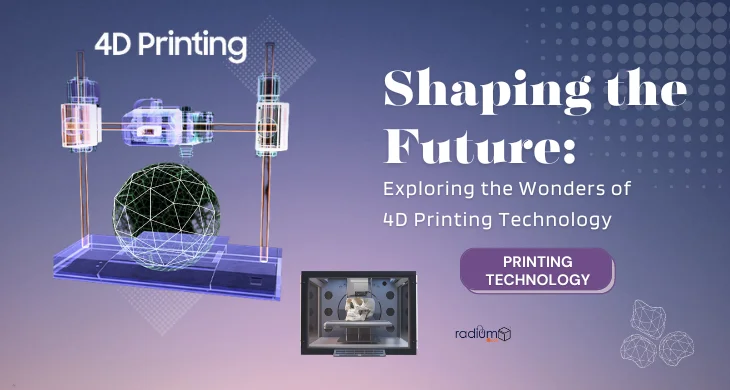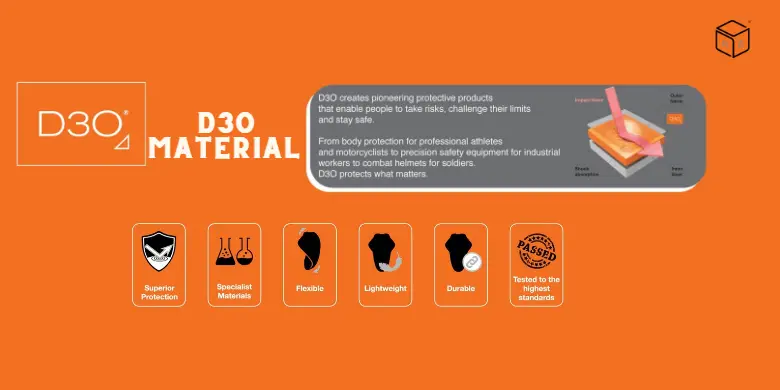Understanding 4D Printing: A Glimpse into the Future:
4D printing represents a remarkable leap in additive manufacturing, going beyond the confines of 3D printing. In essence, the ‘4D’ in 4D printing signifies the fourth dimension, which is time. It encapsulates the profound concept of creating objects that not only take shape in three dimensions but also possess the ability to dynamically transform and adapt over time.
Xinyi Xiao, an esteemed assistant professor of mechanical and manufacturing engineering at Miami University, elaborates, “4D printing empowers the creation of objects enriched with additional features that enable them to undergo shape or function modifications as time unfolds. This innovation opens doors to the development of objects capable of seamlessly adapting to their environment or even autonomously repairing themselves.”
Unlocking the Mechanics of 4D Printing:
4D printing leverages state-of-the-art 3D printers as its primary tool. The journey commences with the input of a special class of materials known as “smart materials” or metamaterials. These ingenious textiles possess the transformative capabilities that set 4D objects apart. The metamaterials of choice often include hydrogels and shape memory polymers, each with its unique set of characteristics.
Hydrogels are inherently responsive to moisture, while shape memory polymers possess the remarkable ability to return to their original configuration after undergoing deformation. As Vineeth Venugopal, a distinguished materials engineer at MIT, aptly illustrates, “A straightforward example of such materials would be a sponge, a substance that undergoes a change in shape when subjected to pressure.”
What truly sets these materials apart is a geometric code preprogrammed into them. This code serves as the blueprint for the printed object’s future transformation. When exposed to specific environmental stimuli, as dictated by the code, the object springs into action.
Venugopal elaborates on these remarkable substances, labeling them as “smart materials.” According to him, these substances possess the potential to revolutionize our world. A recent report from the Royal Society, the United Kingdom’s renowned independent scientific academy, underscores the far-reaching impact of these “animated” materials. They could usher in a new era, transforming a myriad of sectors, including construction, transportation, medicine, and textiles, by introducing materials with active, adaptive, and autonomous properties.
Transformative Applications Across Industries:
- Healthcare Revolution: In the realm of healthcare, 4D printing offers groundbreaking possibilities. It can be applied to biofabrication and tissue engineering, enabling the creation of custom-made biological structures. Additionally, it has the potential to revolutionize drug delivery systems, ensuring precise and controlled release of medications.
- Construction and Architecture: 4D printing introduces self-assembling structures and adaptive building components to the construction industry. These innovations promise greater efficiency and sustainability in construction projects.
- Aerospace Advancements: Aerospace engineers are exploring the use of 4D printing to create shape-shifting aircraft components. This not only reduces the weight of aircraft but also enhances fuel efficiency, leading to significant advancements in the aerospace sector.
- Automotive Innovation: In the automotive industry, 4D printing can produce self-healing car parts that can repair themselves when damaged. This technology also enables adaptive vehicle design, enhancing safety and performance on the road.
Challenges and Future Prospects:
- Current Challenges
- Material Limitations: Despite its promise, 4D printing faces challenges related to the availability of suitable materials. Developing materials that can reliably respond to environmental stimuli is an ongoing challenge.
- Scalability Issues: Scaling up 4D printing for mass production remains a challenge. Ensuring consistency and quality on a larger scale is a hurdle that researchers and industries are actively addressing.
2.Future Prospects
- Advancements in Responsive Materials: The future of 4D printing hinges on innovations in responsive materials. Researchers are actively exploring new materials that can offer enhanced properties, durability, and responsiveness.
- Integration with Artificial Intelligence: Integrating 4D printing with artificial intelligence (AI) holds immense potential. AI-driven design and control systems can optimize the performance of 4D-printed objects, opening doors to unprecedented applications and efficiency.
Real-World Success Stories:
- MIT’s Self-Folding Structures: These remarkable structures draw inspiration from the world of origami and folding robots. By exploring the principles of self-assembly and shape transformation, MIT has unlocked a realm of possibilities. These self-folding structures have proven to be more than just scientific novelties; they have found practical applications spanning a wide spectrum of industries. From aerospace to healthcare, these innovations are reshaping the future of engineering and design.
- NASA’s Transformative Spacecraft: Dive into the realm of space exploration with NASA’s groundbreaking use of 4D printing technology. Discover how this cutting-edge innovation has been employed for antenna deployment in the vast expanse of space. Uncover the ways in which this transformative application of 4D printing has revolutionized spacecraft technology, opening up new frontiers in space exploration. The implications of this advancement extend far beyond our planet and hold the key to unlocking the mysteries of the cosmos. NASA’s pioneering efforts are reshaping the future of space travel and our understanding of the universe.
Environmental Impact and Sustainability:
- Reducing Waste
- Precision Manufacturing: Discover how 4D printing leads the way in minimizing material wastage by employing precision-driven manufacturing techniques. Witness how this revolutionary approach optimizes resource utilization.
- Recyclable Materials: Explore the eco-conscious side of 4D printing, as we delve into its utilization of recyclable materials. Learn how this eco-friendly choice contributes to responsible and sustainable fabrication processes.
2. Energy Efficiency
- Smart Energy Systems: Embark on a journey to understand the pivotal role of 4D printing in the development of smart and energy-efficient systems. Uncover how this technology aligns with the future of energy conservation and intelligent resource management.
- Green Building Solutions: Delve into the realm of environmentally friendly construction practices, where 4D printing emerges as a transformative force. Learn how it plays a vital role in shaping green building solutions that promote sustainability, reduce environmental impact, and pave the way for a greener future.
Ethical and Regulatory Considerations:
Let’s navigates through the intricate ethical and regulatory landscape of 4D printing, addressing two fundamental aspects:
- Ethical Implications: Embark on an exploration of the ethical frontiers illuminated by 4D printing’s evolving capabilities. Delve into thought-provoking discussions surrounding privacy concerns and the complex realm of intellectual property challenges. Gain insights into the ethical dilemmas and considerations that emerge in this transformative field.
- Regulatory Framework: Gain a profound understanding of the regulatory framework governing 4D printing technologies. Uncover the essential standards and safety protocols that are paramount for the responsible development and deployment of 4D printing innovations. Explore the regulatory landscape that safeguards ethical practices and ensures the secure progression of this groundbreaking technology.
FAQS:
1. What is 4D printing?
Answer: 4D printing involves creating objects using smart materials that can self-assemble and change shape or function over time in response to specific stimuli.
2. How does 4D printing work?
Answer: 4D printing works by using smart materials like hydrogels or shape memory polymers that respond to environmental stimuli. These materials are programmed to change shape or properties when triggered.
3. What are the applications of 4D printing?
Answer: 4D printing has diverse applications, including healthcare (custom implants, drug delivery), construction (self-assembling structures), aerospace (shape-shifting components), and automotive (self-healing car parts).
4. What are the challenges of 4D printing?
Answer: Challenges include material limitations and scalability issues. However, ongoing advancements in responsive materials offer promising solutions.
5. How can 4D printing benefit the environment?
Answer: 4D printing can reduce waste through precision manufacturing, use of recyclable materials, and contribute to energy efficiency in various sectors.
Conclusion:
4D printing technology is a revolutionary force poised to shape the future in profound ways. It offers a glimpse into a world where materials respond dynamically to their surroundings, unlocking unprecedented possibilities across industries. From healthcare to aerospace and beyond, 4D printing has the potential to redefine how we approach design, manufacturing, and sustainability.
While challenges and ethical considerations exist, they serve as opportunities for further exploration and innovation. As we navigate the ever-evolving landscape of 4D printing, it’s clear that its wonders are just beginning to unfold. With responsible development and adherence to regulatory standards, we can harness the full potential of this transformative technology, making the future brighter, more efficient, and more environmentally sustainable. The journey of shaping the future through 4D printing has only just begun, and its wonders are yet to be fully realized.




